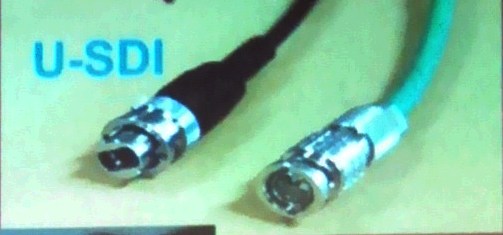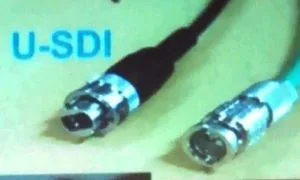At the annual NAB Conference in Las Vegas last week, NHK described its plans for rolling out a UHD over-the-air infrastructure and content services. NHK Executive Research Engineer Masayuki Sugawara gave the talk, originally scheduled to be presented by NHK Deputy Head of Science & Technology Research Laboratories Toru Kuroda.
Sugawara described the efforts in Japan aimed at deploying 8K broadcasting via satellite and terrestrial transmission. Super Hi-Vision, at 7680 × 4320-pixels, is being considered as not only an extension of HDTV but also as the format for “ultimate television” – a label that prompted a question from the audience on whether there could be yet another format beyond 8k – to which he responded “No, it’s really the ultimate, there won’t be any beyond that.”
The 4K/8K UHDTV broadcast roadmap laid out by the Japanese government and the Next Generation Television & Broadcasting Promotion Forum (NexTV-F) includes conducting 8K test broadcasting via satellite in 2016, leading to commercial broadcasting services starting in 2018.
The UHD standardization process has been underway at the Association of Radio Industries and Businesses (ARIB), in cooperation with the Telecommunications Council, Japan. The target Technical specification for UHDTV broadcasting systems in Japan is as follows.
- 11.7–12.2 GHz (BSS band) and 12.2-12.75 GHz (FSS band)
- 34.5 MHz satellite bandwidth
- π/2-shift BPSK, QPSK, 8PSK, 16APSK, and 32APSK modulation
- 33.7561 Mbaud Symbol rate
- ~100 Mbps Transmission capacity @ 16APSK, rate 7/9
- BCH outer code, LDPC inner code Forward error correction
- MPEG-2 TS, MMT+TLV Multiplexing
- H.265|MPEG-H HEVC Video source coding
- MPEG-4 AAC, MPEG-4 ALS Audio source coding, maximum 22.2 channels
- Image format 1080/60/I, 1080/60/P, 2160/60/P, 2160/120/P, 4320/60/P, 4320/120/P, also each at 1000/1001 frame rate
- Colorimetry ITU-R BT.709 or IEC61966-2-4 for HDTV, ITU-R BT.2020 for UHDTV
- Scrambling scheme AES, Camellia
Because of the potential impact existing RF spectrum, services will initially be deployed by satellite. 32APSK modulation is included because large-aperture receive antennas of more than 18 inch (45cm) diameter are expected to be used. Subjective picture-quality evaluations concluded that a bit rate of 80-100 Mbps will be needed for 8K/60P.
A new interface was developed for transporting UHD signal in the production environment, based on the HD-SDI serial interface for HDTV. The new interface is based on 10Gbps optical multifiber technology standardized at ARIB, based on requirements such as the Rec. 2020 formats. This interface is called “U-SDI” and is under standardization at ITU-R and SMPTE. The 24-core multimode fiber runs at 240 Gbps, and supports a maximum cable length of 100m.
 New-design optical connector for 8K serial digital signals, alongside conventional BNC connector
New-design optical connector for 8K serial digital signals, alongside conventional BNC connector
Currently, 8K LCD displays are known to be under development by Sharp (85”), Panasonic (55”), Samsung (110”), LG (98”) and a 13.3” OLED from SEL (Semiconductor Energy Laboratory. NHK says that a guideline for designing 8K display colorimetry needs to be developed. Following from the public demos at the 2014 World Cup in Brazil, test broadcasts are expected in 2016 at the Rio Olympics and in 2018 at the World Cup in Russia. Commercial broadcasts are currently planned in time for the 2020 Olympics in Tokyo. AGC
Chris reported on the developments from the display and camera perspectives. (Update on 8K Status and Roadmap)

